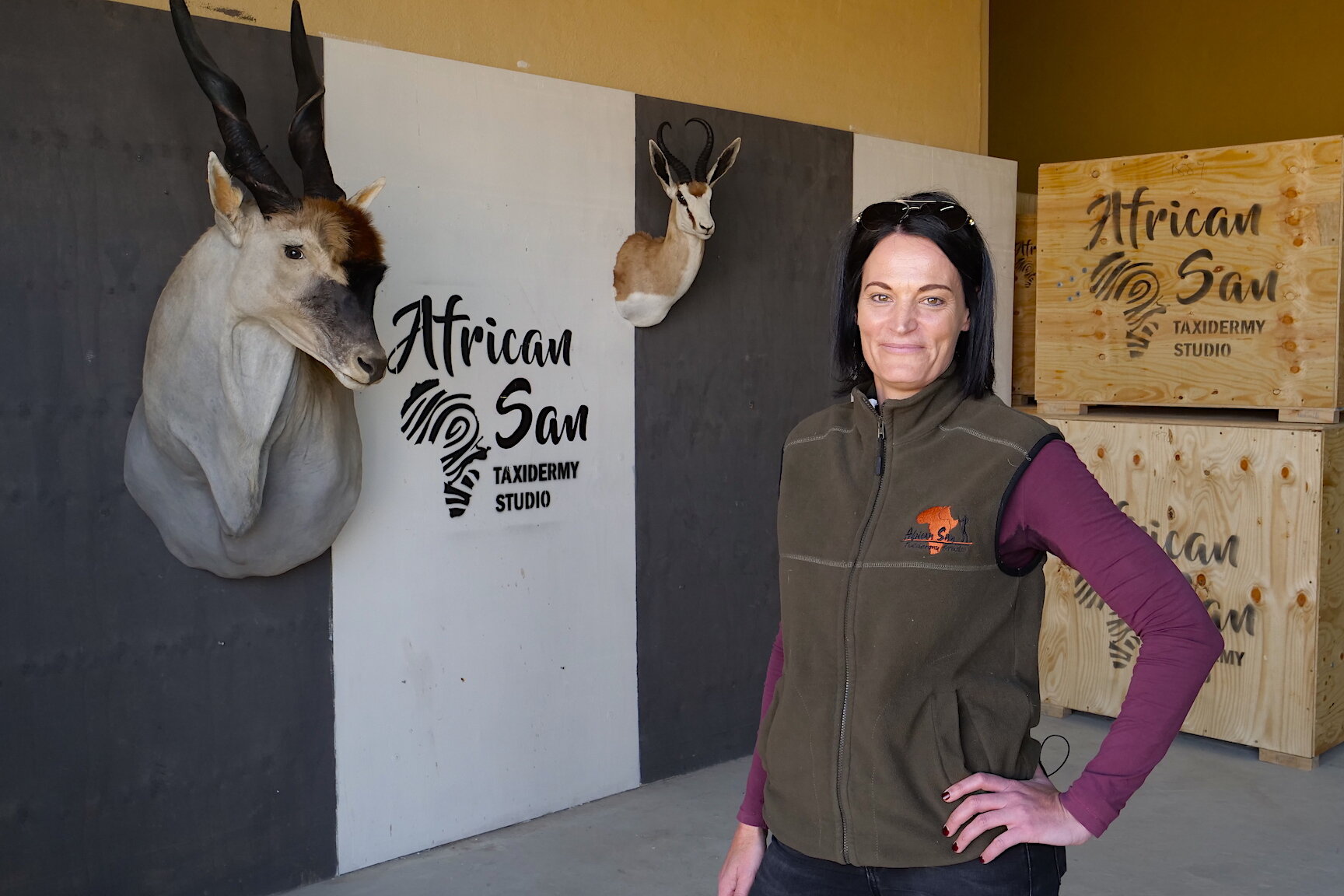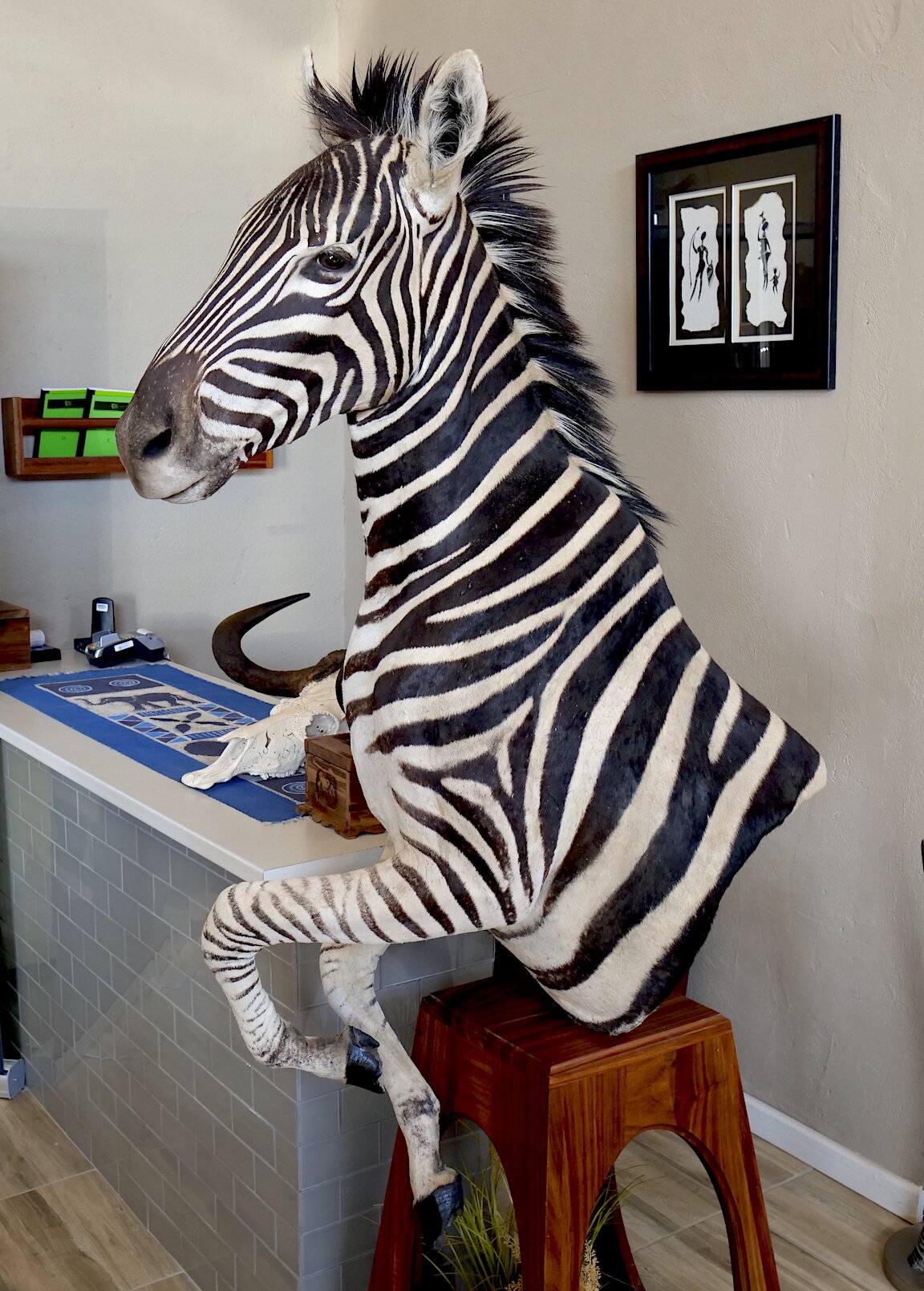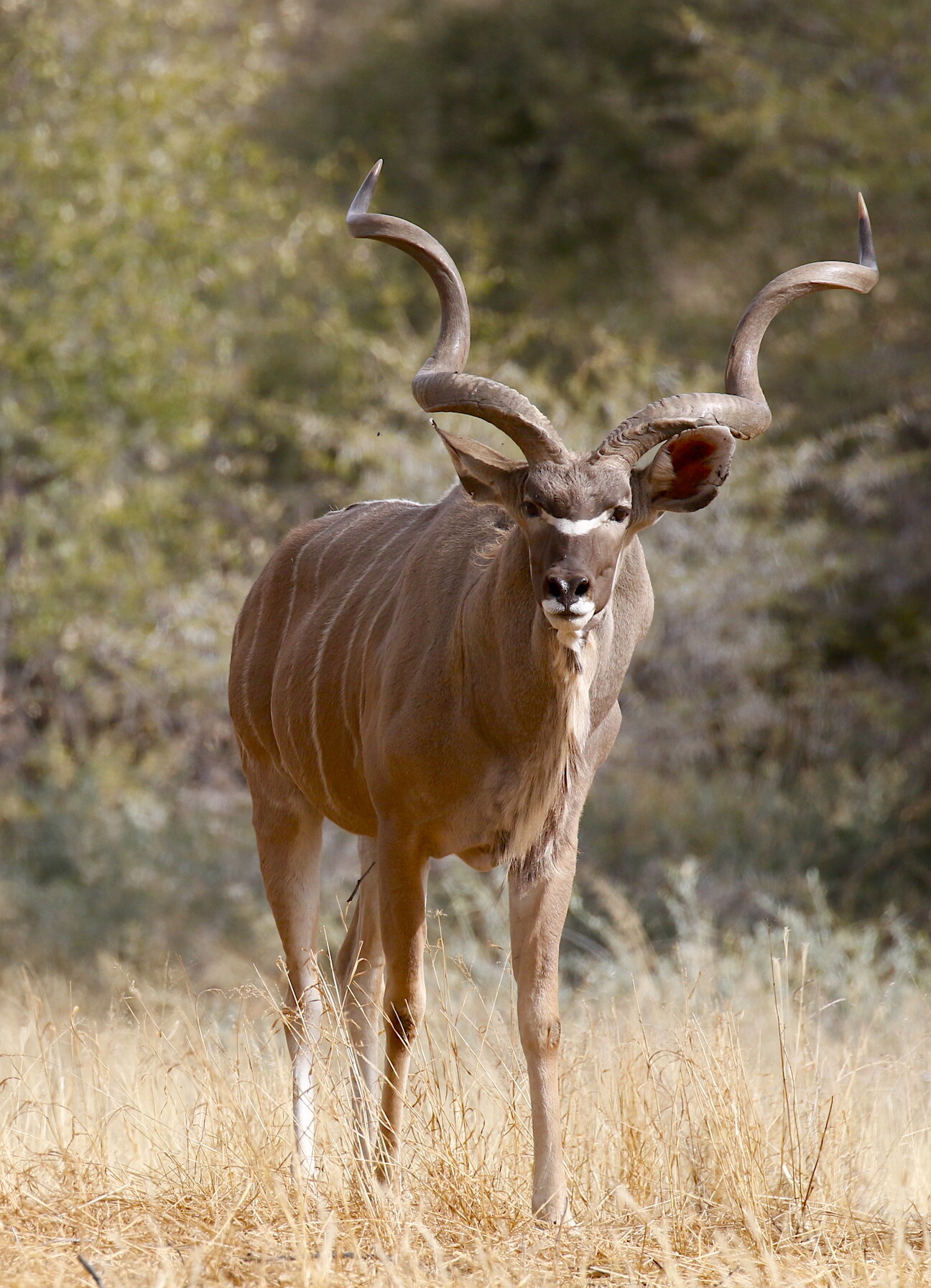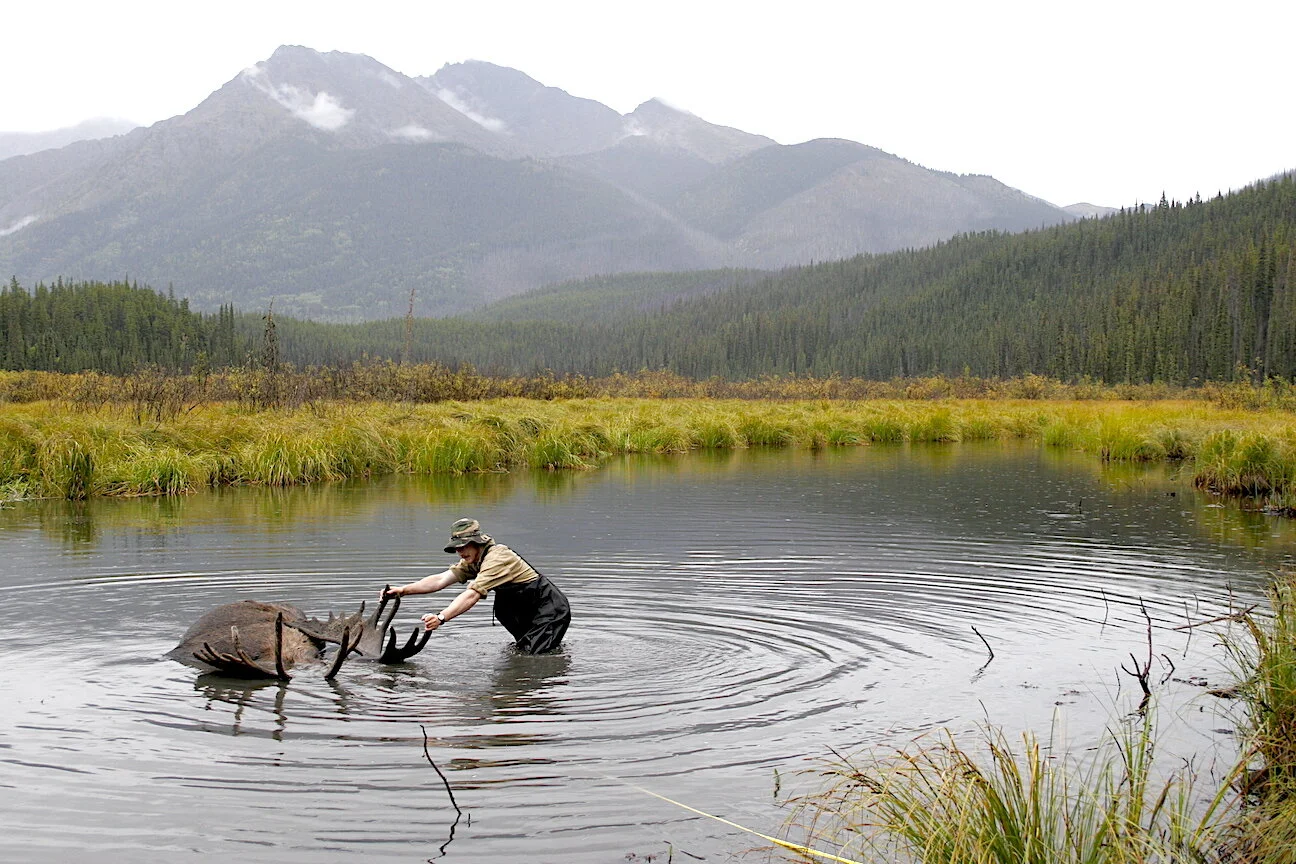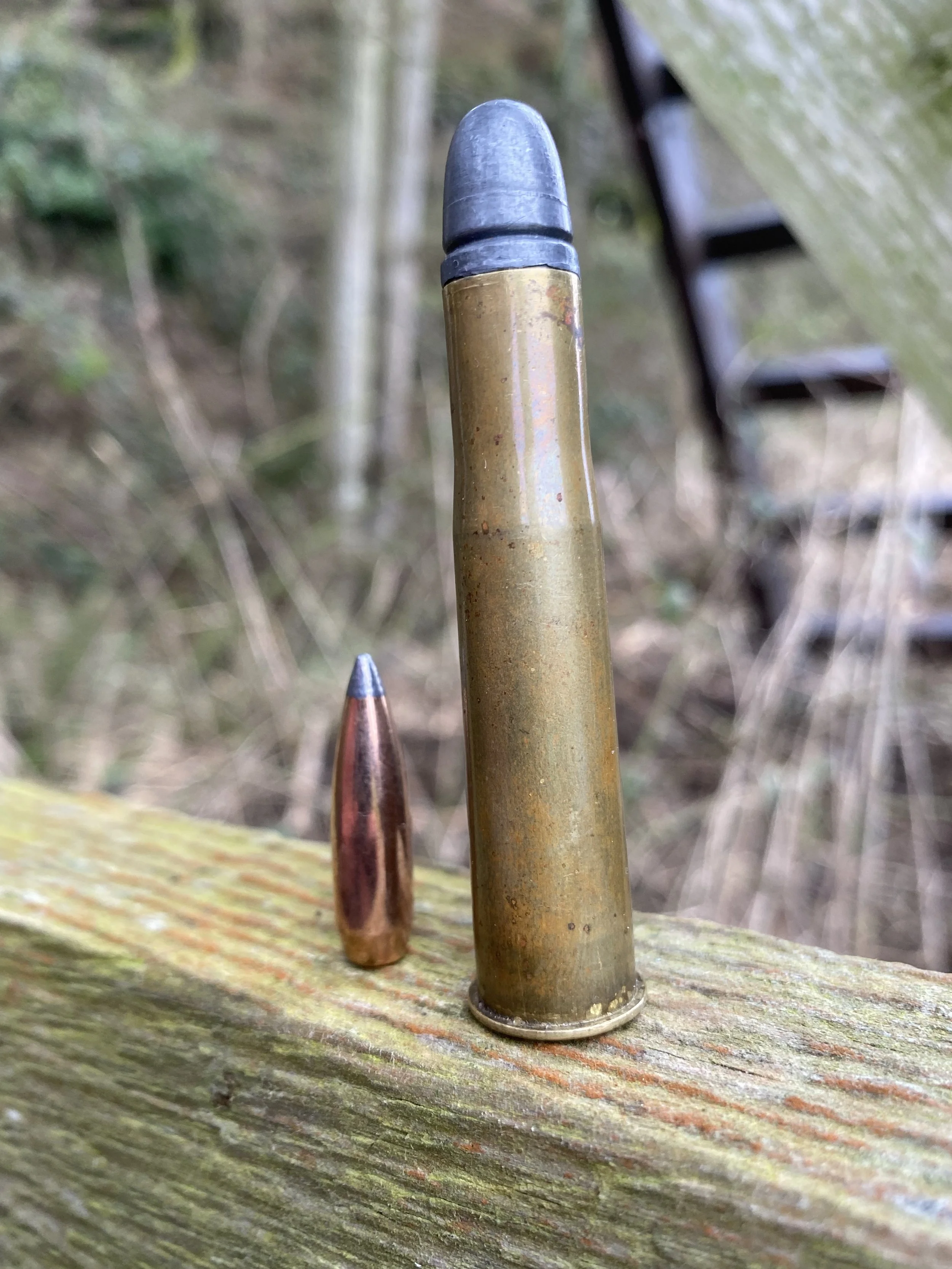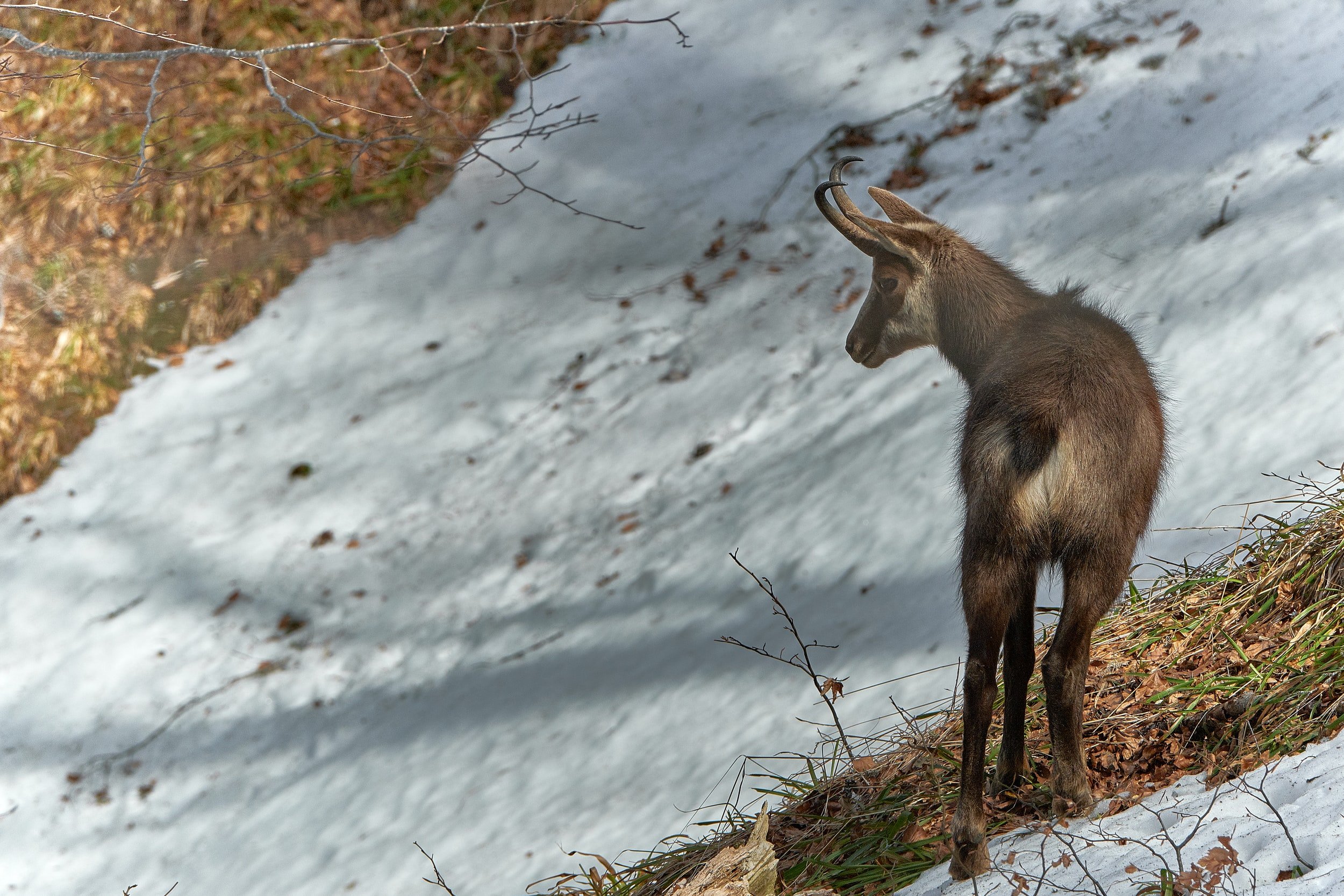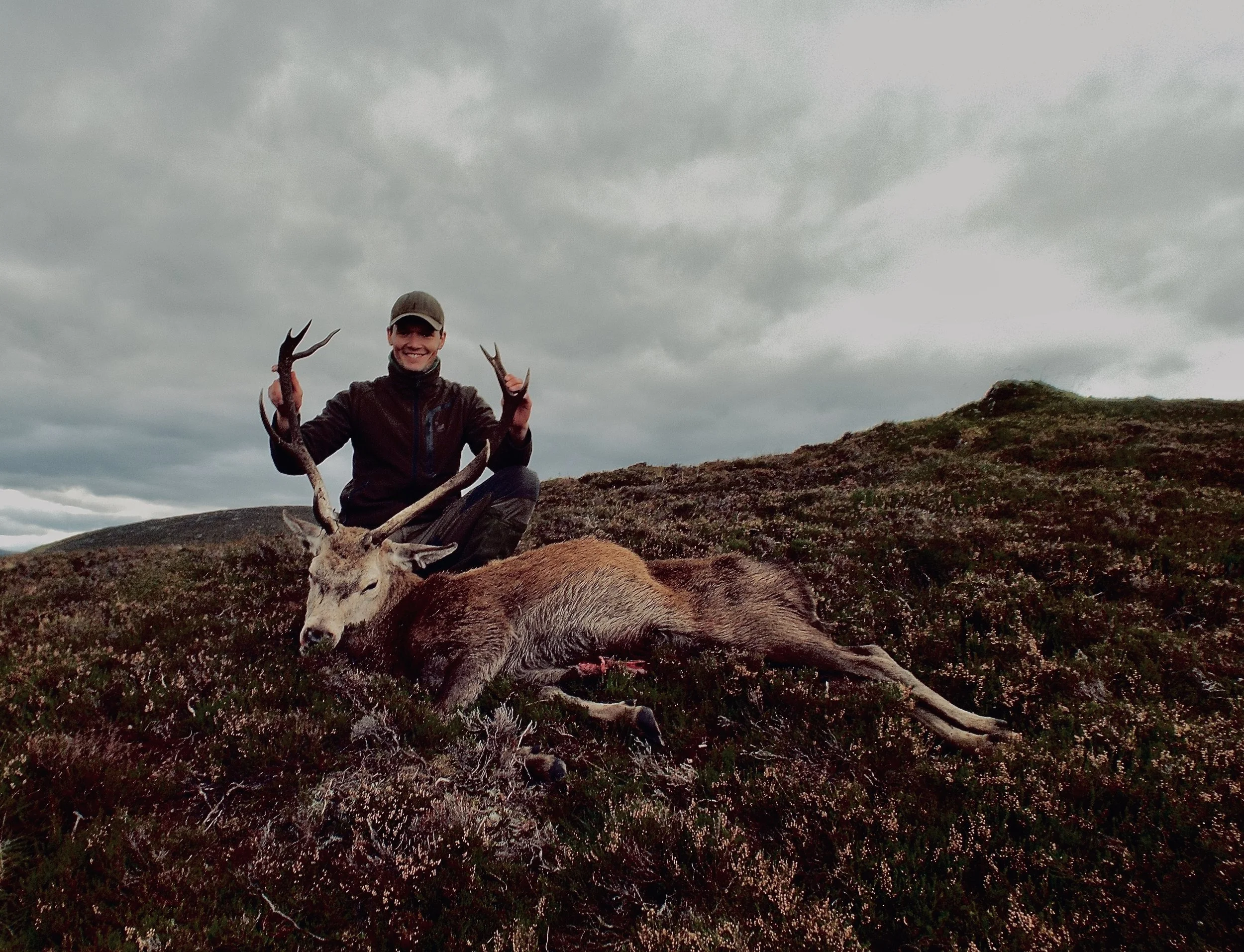African San Taxidermy Best Buy
You might save money if you hire African San Taxidermy. You might save your Africa trophies, too.
Africa San Taxidermy manager karen Hoffman stands beside crates ready for shipping.
African San Taxidermy studio manager Karen Hoffman in the shipping room. Note the sturdy crates ready for shipment as well as the quality taxidermy of that eland and springbuck.
Best Buy Hunting, But...
North American hunters understand that southern Africa hunting is today’s Best Buy. They are also hearing horror stories about getting skins and horns home. Shipments are late, expensive, and often damaged. Holes in hides, patches of hair missing, horns suspiciously undersized or absent from the box. Packing, shipping, transport and inspection fees can add up to as much as or more than the cost of the hunt itself.
Seriously. You can find hunt packages with 5 to as many as 10 animals for as little as $3,500, but shipping those trophies back might run you closer to $4,000.
Taxidermy roan, buffalo and sable at Africa San Taxidermy studios in Kimberly.
How do these examples of African San Taxidermy look to you? Roan, buffalo and sable looked pretty good to me, so I hired AST to mount a roan. If it arrives this month as scheduled, turn around time will have been just 8 months.
Lower Costs, Avoid Damage
You can reduce this cost and the risk of damaged goods if you have your trophies mounted in Africa. By the right African taxidermist. Trust me, there are good and bad taxidermists in Africa; same as here. I’ve toured several large shops in Namibia and South Africa. They were good to excellent. One small shop showed pathetic work. I most recently visited African San Taxidermy in Kimberly, South Africa. While they probably aren’t cranking out award winning art 100% of the time, their average work matches what you’ll find from many, if not most, U.S. taxidermists. And their best work rivals the best here, too. I suspect, as with any taxidermist shop, the individual artisan who works on your mounts determines the final quality. And, as with any taxidermist shop, you can discuss with African San Taxidermy the quality of work you expect and settle on a commensurate price.
Sable antelope mount.
My U.S. taxidermist,
in McCall, ID, does beautiful work IF I can get the capes and horns back from Africa in decent shape. This sable made the long trip from Zambia in great condition
,
and Terry Saba has made sure it will stay that way.
Value Added at African San Taxidermy
African San, by the way, trains and employs dozens of locals, supporting some 50 families. They have their own tannery on site, too, so they don't waste time sending you salted hides that might slip (lose hair) after tanning. And they can usually find replacement capes and hides if any are found defective during early processing. As shop manager Karen Hoffman explained, African San Taxidermy is yet another example of sustainable wildlife conservation in Africa. Because hunters have created a demand for native wildlife, private land owners have reintroduced and augmented species wiped out by farming more than 100 years ago. This results in jobs for game catchers, managers, trackers, professional hunters, skinners, lodge managers, house keepers, cooks, transport drivers -- and taxidermists.
African San taxidermy artisan at work.
Hunting in Africa benefits more than just wildlife. African San Taxidermy employs several dozen workers and artisans, a value-added business that wouldn't exist without hunter demand for wildlife and memories.
Believe it or not, having your mementos tanned and rugged or mounted in Africa could save you money and prevent the "damaged goods" issues common to dried, dipped, and shipped raw skins and horns. And taxidermy items may not be subject to the same government wildlife regulations (red tape) required for raw skins, skulls and horns.
Regulations and Red Tape
I don’t know all the specifics on taxidermy vs. raw laws and regulations, but I do remember that when I’ve had trophies mounted in Africa and then shipped to the U.S., I filled out fewer government regulatory papers and paid fewer fees overall. Raw warthog and baboon skins and skulls, for instance, require special import permits from CDC via the Etiologic Agent Import Permit Program. Fully finished, mounted specimens and skulls/skins that have been “treated” (disinfected, I guess) don’t require this. In addition, un-worked hog and baboon parts must be packed separately from other animals, creating extra expense. No such requirements for fully finished taxidermy.
Hunter examines a red lechwe bull he's just shot.
The challenge is always getting your trophies home and looking as stunning as they did when you first encountered them. Here Carlos Martinez is soaking in the beauty of his red lechwe taken with
Trophy Travels from Field to Den
Traditionally the capes and flat skins you collect on safari are skinned, fleshed, salted, and dried in camp. Skulls, teeth, and horns are boiled in camp. These parts are then sent to an African taxidermist who dips and packs them for shipment. This usually takes a month or two. The taxidermist then hands this over to a shipping agent who handles a bunch of export paperwork and sticks the box on a plane or cargo ship for the ride to a customs brokerage and freight forwarding company in some large city like NYC, Seattle, Chicago, Dallas, etc. It is then shipped to you or your taxidermist. You end up paying the taxidermist (usually integrated as part of your safari fee,) the shipping agent, the transport company, the U.S. broker, and often some U.S. govt. bureaucracy. And then more shipping fees from the broker to your home, taxidermist, or tannery.
Zebra mount in African San Taxidermy studio.
This half-body, rearing zebra mount in the African San Taxidermy studios near Kimberly really showcases their artistic work. I've seen zebra in the wild rearing like this often as they kick one another and battle for position within the herd.
Lumps of Coal in Your Stocking?
When your raw Africa skins arrive, they are folded into unrecognizable lumps that are too dry and hard to open. So you or your taxidermist must ship them to a tannery where you pay several hundred dollars to have each one tanned. Only then do you discover whether or not the hair has slipped. There’s nothing quite so deflating as discovering the $1,500 kudu you paid to hunt has come back to you as a $300 slab of leather with half the hair missing.
A stunning dudu bull represents the kind of beauty Africa San taxidermy can reproduce.
When you shoot a kudu as magnificent as this one from
you'd like to get it home in one piece -- with hair intact.
I know this because it’s happened to me and one of my friends. Getting satisfaction is nearly impossible unless your outfitter/PH is a remarkable, stand-up character. Most will blame the taxidermist who will blame the shipping agent who will blame the transport company who will blame the custom’s broker who will blame the African taxidermist or any other distant, legally untouchable entity. Unless you care to fly back to Africa for some hands-on persuasion.
With completed taxidermy you shouldn’t have those problems. At least not the damaged capes and hides issues.
First African Taxidermist Success
I tried my first African taxidermist in the late 1990s. I’ve forgotten the name, but it was in or near Johannesburg. The cost for five heads mounted and shipped was less than the mounting alone would have cost me here. Actual shipping costs were about the same as raw heads and skins would have been. It was amazing how small of a box they'd packed those mounts into, all screwed solidly to the walls. And nothing was damaged. None of the work was gold medal quality, but I wasn’t charged its weight in gold, either.
In contrast, of the four kudu I've shipped home for taxidermy work, none has quite made it. Once the horns were missing, once the wrong horns were included, once the cape was missing, and once the cape was half hairless. Most recently my friend Jerry was the happy recipient of a formerly beautiful kudu cape that appeared to have died from terminal mange.
Image shows an African San Taxidermy shipping box.
All boxed up with somewhere to go. The manner in which your trophies are handled, prepared, protected, boxed and shipped are critical. The solid, professional boxing of mounts I saw at
reassured me my roan will be in perfect shape when it arrives statewide.
African San Taxidermy to the Rescue?
With Jerry's recent misfortune as my guide, I hired African San after last summer's safari with Fort Richmond Safaris. I wasn’t going to have any taxidermy done, but I ended up taking a spectacular roan antelope. At the urging of PH Geoffrey Wayland, I toured the nearby African San Taxidermy shop. After touring their facility and seeing various mounts finished and under construction, I relented.
That was last June. Now, seven months later, the finished head is already on its way. I don't expect it to arrive with half the hair missing.
A major contributor to my choosing African San was its packaging technique. When heads are done they are securely wrapped in heavy polyethylene to prevent any leakage/water damage in transit. Then they are securely screwed to well-built wooden crates and wrapped with another thick poly lining to further prevent damage and simplify shipping.
Image shows a close up of detail work around the eye of a roan mount.
The devil may be in the details, but so is the perfection. The work around the eye of this roan indicates African San knows what it's doing.
My roan should come knocking at the front door very soon. I'll let you know how it looks, good, bad or indifferent. If African San Taxidermy lives up to what I saw in its shop, my roan could look as good as the Zambian sable Terry Saba of Natural Arts Taxidermy in McCall, Idaho, mounted a few years back. Roan and sable. Two of the biggest, most dramatic scimitar-horned antelope in the world. The high quality taxidermy on each will ensure they remain beautiful -- and inspire dreaming -- for decades.
The author wishes he had the resources to have all the game he shoots preserved forever. Or at least a representative or two from each species. He takes solace in knowing that Nature will recycle all meat, bones, feathers, and hair into more living specimens -- so long as we leave them space and natural habitats in which to thrive.



